Oh, calamansi! That zesty little citrus fruit that’s a powerhouse in Filipino cuisine.
Found yourself in a pickle because you’ve got none at hand? Yup, we’ve been there, searching high and low in our local grocery aisles.
Good news: you’re not out of luck. We’re here to spill the beans on five fabulous stand-ins that’ll save your dish without a hitch.
Ever tried using a lemon or maybe a lime? Sounds simple, but the trick is knowing how to mix and match to get that unique calamansi tang.
Grab your aprons, folks, because we’re about to dive into a quick, fun rundown of kitchen swaps that’ll make your next culinary creation a breeze.
What is Calamansi?

Calamansi is a citrus fruit that is popular in Southeast Asia.
It is similar in appearance to lime, but it is slightly smaller and has a more acidic flavor.
Calamansi is commonly used in Filipino cuisine, and it is often used as a souring agent in dishes such as adobo and sinigang.
The juice of the calamansi is also a popular drink, and it is often combined with water or soda to create a refreshing beverage.
In addition to its culinary uses, calamansi is also known for its many health benefits.
The fruit is rich in vitamin C and antioxidants, and it has been traditionally used to treat colds and flu.
Today, calamansi remains an important part of Filipino culture, and its unique flavor continues to delight fans around the world.
The 5 Best Substitutes for Calamansi
Calamansi, a small citrus fruit native to Southeast Asia, is known for its tangy and acidic flavor. It is a popular ingredient in many dishes, beverages, and sauces.
However, if you cannot find calamansi or need a substitute with a similar taste profile, there are several alternatives to consider.
In this guide, we will compare the top 5 substitutes for calamansi, discussing their key characteristics and suggesting proper ratios to help you find suitable alternatives.
| Substitute | Key Characteristics | Proper Ratio |
|---|---|---|
| Lemon | Tart and acidic citrus fruit that provides a similar level of acidity as calamansi | Use an equal amount of lemon juice or zest as a substitute for calamansi |
| Key Limes | Small, round limes with a tart and tangy flavor that closely resembles the taste of calamansi | Use an equal amount of key lime juice as a substitute for calamansi |
| Tangerine | Sweet and tangy citrus fruit that offers a milder acidity compared to calamansi | Use an equal amount of tangerine juice or zest as a substitute for calamansi |
| Yuzu | Japanese citrus fruit with a unique tart and aromatic flavor that adds complexity to dishes | Use an equal amount of yuzu juice as a substitute for calamansi |
| Kumquat | Small oval-shaped citrus fruit with a sweet and sour taste that can mimic the flavor of calamansi | Use an equal amount of kumquat juice or zest as a substitute for calamansi |
Now, let’s dive into each substitute in more detail:
1 – Lemon
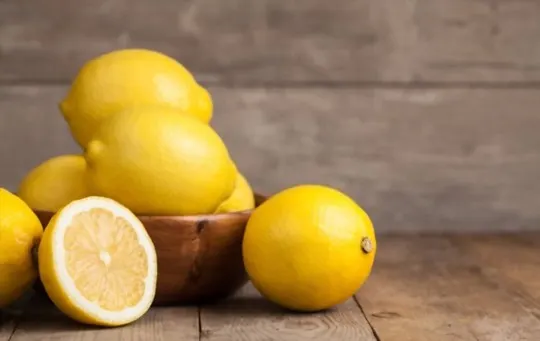
Citrus fruits are prized for their fresh, tart flavor, and lemons are no exception.
Though they are commonly used as a culinary ingredient, lemons also have several other uses.
For instance, the acid in lemon juice can be used as a natural cleaning agent, and the zest can be used to add flavor to food.
In addition, lemons are a good source of vitamin C, boosting the immune system.
While they are available year-round, lemons are at their peak from late winter to early spring.
When choosing a lemon, look for one that is heavy for its size and has bright yellow skin.
Avoid fruits that are dull in color or have soft spots, as these may be signs of spoilage.
With proper care, lemons will stay fresh for up to two weeks.
Store them in a cool, dry place away from direct sunlight.
- Key Characteristics: Lemon is a widely available citrus fruit known for its tart and acidic flavor. It provides a similar level of acidity as calamansi.
- Proper Ratio: Use an equal amount of lemon juice or zest as a substitute for calamansi. Adjust the quantity based on personal preference and desired tanginess.
2 – Key Limes
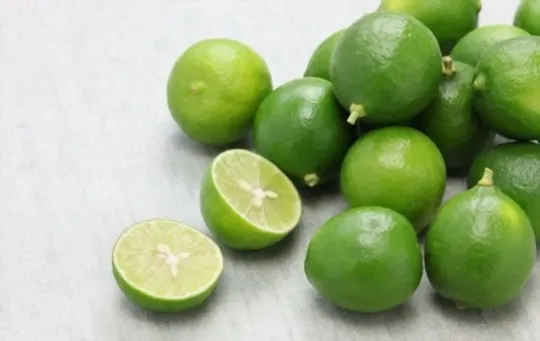
Key limes are a type of citrus fruit that is often used in baking and cooking.
Although they are technically a hybrid of lemon and lime, key limes have their unique tart and sweet flavor.
The small size and intense flavor of key limes make them a popular choice for those who enjoy a tart treat.
In addition to being used in desserts and cocktails, key limes can also be used as a decoration or garnish.
If you are ever in the mood for something sour, consider reaching for a key lime.
- Key Characteristics: Key limes are smaller and rounder than regular limes, with a tart and tangy flavor that closely resembles the taste of calamansi.
- Proper Ratio: Use an equal amount of key lime juice as a substitute for calamansi. Adjust the quantity based on personal preference and desired tanginess.
3 – Tangerine
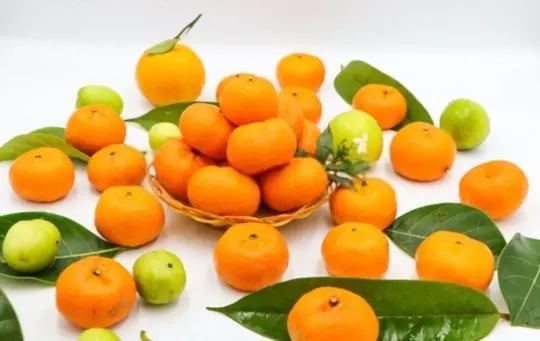
Few things are refreshing as a juicy tangerine on a hot summer day.
Tangerines are a type of mandarin orange, and they are believed to have originated in China.
The name “tangerine” comes from the city of Tangier in Morocco, where the fruit was first introduced to Europe in the 17th century.
Tangerines are smaller and less acidic than oranges, and they have a deep orange color and a fragrant, slightly tart flavor.
Tangerines are an excellent source of Vitamin C, and they also contain fiber, potassium, and other important nutrients.
- Key Characteristics: Tangerines are sweet and tangy citrus fruits that offer a milder acidity compared to calamansi.
- Proper Ratio: Use an equal amount of tangerine juice or zest as a substitute for calamansi. Adjust the quantity based on personal preference and desired tanginess.
4 – Yuzu
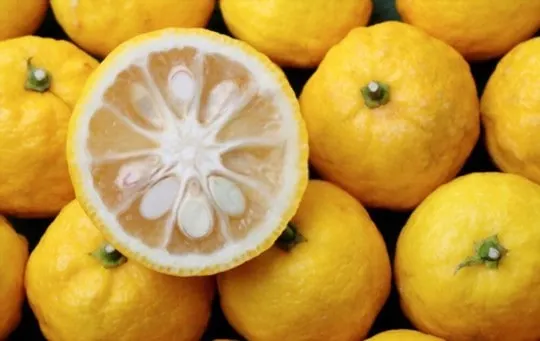
Yuzu is a citrus fruit that is popular in East Asia.
It is often used in cooking, adding a unique flavor to dishes.
The skin of the yuzu is also used to make a type of tea.
In addition to its culinary uses, yuzu is also known for its health benefits.
The fruit is rich in vitamins and minerals, and it has been shown to boost the immune system.
Yuzu is also a good source of antioxidants, which are believed to protect against various diseases.
- Key Characteristics: Yuzu is a Japanese citrus fruit known for its unique tart and aromatic flavor. It adds complexity to dishes and can be used as a substitute for calamansi.
- Proper Ratio: Use an equal amount of yuzu juice as a substitute for calamansi. Adjust the quantity based on personal preference and desired tanginess.
5 – Kumquat
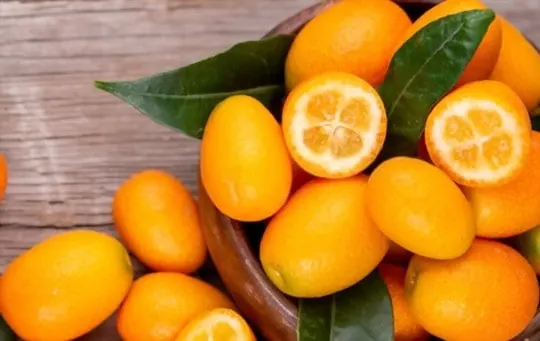
Kumquats are small, round citrus fruits with a tart, tangy flavor.
They are often used in Asian cuisine, and their fragrant oil is used in perfumes and cosmetics.
Kumquats are believed to have originated in China, and they are now grown all over the world.
The skin of a kumquat is edible, and the fruit can be eaten whole.
Kumquats are a good source of Vitamin C, and they also contain antioxidants and fiber.
In addition to being eaten fresh, kumquats can be candied, pickled, or made into jams and marmalades.
They can also be used to flavor liqueurs and desserts.
- Key Characteristics: Kumquats are small oval-shaped citrus fruits with a sweet and sour taste. They can mimic the flavor of calamansi in recipes.
- Proper Ratio: Use an equal amount of kumquat juice or zest as a substitute for calamansi. Adjust the quantity based on personal preference and desired tanginess.
Conclusion
In conclusion, calamansi is a delicious citrus fruit that can be used in various dishes.
While it is not always easy to find, several substitutes can be used in its place.
The best substitutes for calamansi include lemon, key lime, yuzu, tangerine, and kumquat.
Each of these fruits has a similar flavor and can be used in many same ways as calamansi.
So if you find yourself in a pinch, any one of these fruits would make a great substitute for calamansi.
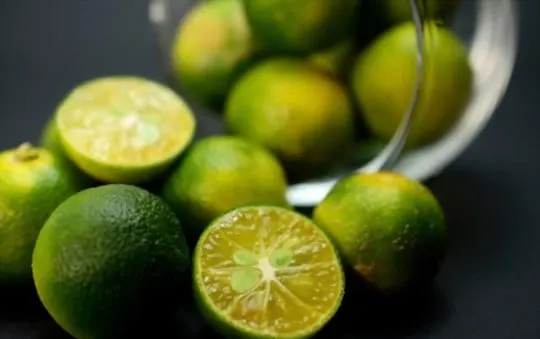
The 5 Best Substitutes for Calamansi
Ingredients
- Lemon
- Key Limes
- Tangerine
- Yuzu
- Kumquat
Instructions
- Pick your favorite substitute from the list above.
- Follow cooking directions for your selected substitute with the proper ratio of ingredients.

Andrew Gray is a seasoned food writer and blogger with a wealth of experience in the restaurant and catering industries. With a passion for all things delicious, Andrew has honed his culinary expertise through his work as a personal chef and caterer.
His love for food led him to venture into food writing, where he has contributed to various online publications, sharing his knowledge and insights on the culinary world. As the proud owner of AmericasRestaurant.com, Andrew covers a wide range of topics, including recipes, restaurant reviews, product recommendations, and culinary tips.
Through his website, he aims to inspire and educate fellow food enthusiasts, offering a comprehensive resource for all things food-related.

Leave a comment